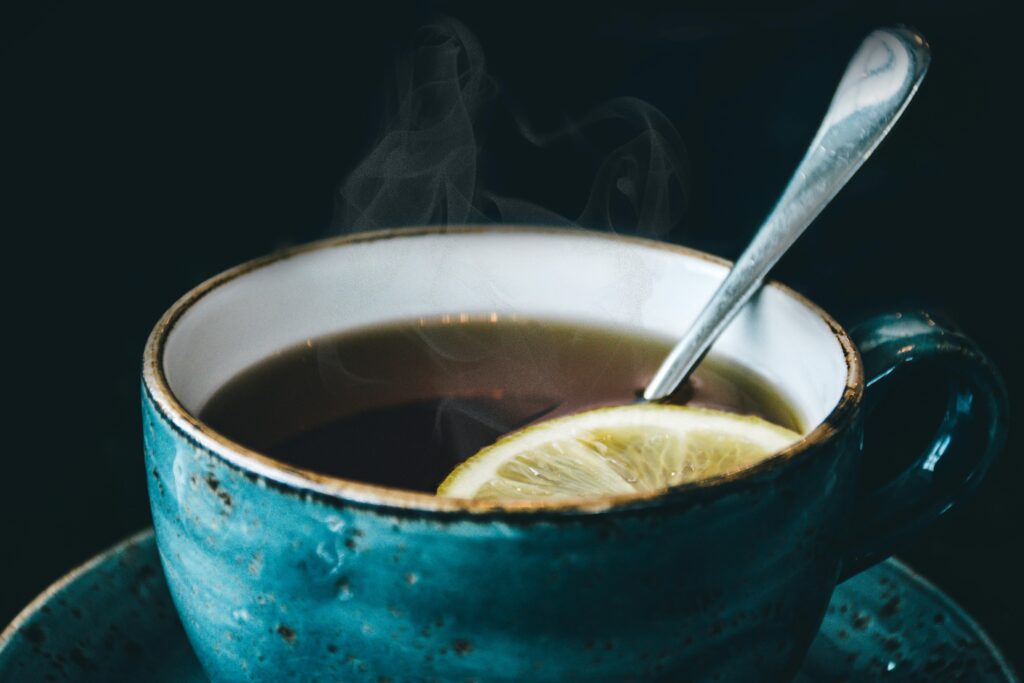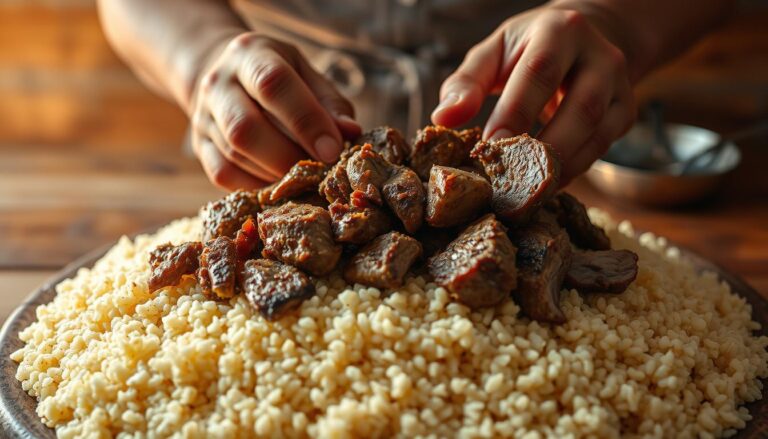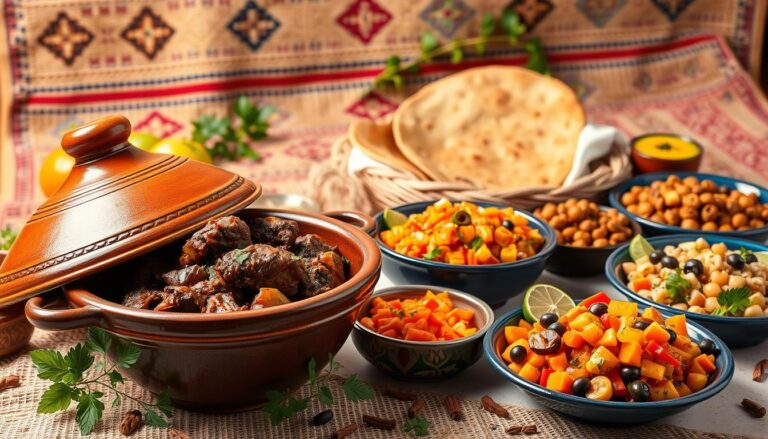The Enchantment of Moroccan Mint Tea

More than merely a drink, Moroccan mint tea—fondly referred to by the locals as “Moroccan whisky”—is a deeply ingrained cultural custom. This aromatic beverage, which is mostly composed with sugar, green tea, and fresh mint leaves, captures the essence of Moroccan social interaction and hospitality. As a pleasant beverage and a representation of warmth and charity, its preparation and consumption are essential to daily living. The tea’s attractiveness is enhanced by its vivid green hue, the sweet aftertaste, and the fragrant blast of mint. The intriguing realm of Moroccan mint tea will be examined in this essay, along with its cultural relevance, preparation techniques, historical significance, and other subtleties that contribute to its popularity as a household staple in Morocco.
Historical Background
The origins of Moroccan mint tea can be found in the 18th century, when trade lines linking China and the Arab world brought green tea to Morocco. Tea was once considered a luxury good for the affluent, but as its appeal increased, it became more widely available. Since fresh mint is extensively grown throughout Morocco, it is thought that the practice of infusing it into tea began there. This blend of mint and green tea not only produced a cool drink but also spoke to the Moroccan culture, which values kindness and hospitality. With distinctive rituals and practices that reflect the various cultural influences that have shaped Moroccan society, the ritual of making and serving mint tea has developed into an art form throughout time.
Ingredients and How to Make Them
Moroccan mint tea’s primary components are sugar, fresh mint leaves, and green tea—typically gunpowder tea. The tea leaves are first prepared by pouring boiling water over them in a saucepan, allowing the leaves to soak and release their flavors. The addition of fresh mint leaves and sugar to taste results in a flavorful combination. Traditionally, the tea is poured into tiny cups from a height, which allows the tea to aerate and form a frothy top. This customary pouring technique not only improves the flavor but also shows how welcoming the host is. It is a social activity that unites people since the whole process—from boiling the water to the last pour—is frequently marked by animated discussion and laughter.
Cultural Importance
In Moroccan culture, mint tea is particularly significant as a symbol of friendliness, hospitality, and interpersonal relationships. Moroccan hospitality is deeply ingrained in Moroccan culture, and it is common for hosts to provide tea to guests as a symbol of welcome and respect. Sharing tea strengthens ties between family members and friends and creates a cozy, supportive environment. To further highlight its ability to unite people, mint tea is frequently offered at important life events like weddings and religious festivities. Furthermore, the way mint tea is prepared and served varies depending on the location and the occasion, illustrating the richness of Moroccan culture and the significance of tea in social customs.
Regional Differences
Although the basic components and method of making Moroccan mint tea are the same, there are regional variances that give this well-liked beverage distinctive twists. For instance, in coastal regions, tea could be flavored with extra herbs or spices, such rosemary or sage, to represent the surrounding flora. In order to accommodate local tastes, tea may be served stronger and with less sugar in mountainous areas. To improve the flavor profile, some families might also use citrus components like lemon or orange blossom water. In addition to showcasing mint tea’s adaptability, these regional variations show how regional ingredients and traditions influence how this beverage is consumed throughout Morocco.
Advantages for Health
Moroccan mint tea has several health advantages in addition to being a delicious beverage. Antioxidants included in green tea help fight oxidative stress and lower the chance of developing chronic illnesses. Known for its calming qualities, mint helps with digestion and can ease bloating and stomach symptoms. A cool taste explosion that can awaken the senses is another benefit of the green tea and mint combination. Although its refreshing qualities make it an ideal choice for hot summer days, the warm beverage may also be calming in colder climates. Moroccan mint tea is a beloved beverage that fosters vigor and well-being because of its many health advantages as well as its cultural value.
The Craft of Serving
Moroccan mint tea serving is an art form in and of itself, with unique traditions and methods that enhance the experience. In order to allow the liquid to aerate and produce a frothy top, tea is traditionally served from a height. In addition to improving the flavor, this pouring technique displays the server’s ability. The presentation’s visual appeal is enhanced by the frequently elaborate, colorful glass or metal cups used for mint tea. In order to represent the progression of the experience, the tea is traditionally served in three rounds, each with a varying sweetness. In order to give guests time to appreciate the shifting flavors, the first glass is usually the sweetest and the last one is more muted. Tea drinking becomes a social activity thanks to this intricate serving custom, which strengthens bonds and produces enduring memories.
Growing Mint
Moroccan mint production is an essential part of Moroccan agricultural techniques, and fresh mint is a key ingredient in Moroccan mint tea. Mint grows well in Morocco’s varied climates, from the coastal to the mountains, and is widely planted in gardens and farms all around the nation. Because of their aromatic properties, local mint kinds like spearmint and “na’na” are especially valued. Mint cultivation helps to preserve ancient customs and culinary heritage in addition to boosting the economy. Mint is frequently picked by hand by farmers, guaranteeing that only the freshest leaves are used to make tea. This link to regional farming highlights the value of quality and freshness in Moroccan cooking, elevating the whole tea-drinking experience.
Rituals in Society
Moroccan mint tea drinking is frequently associated with social customs that prioritize community and connection. The custom of serving tea after meals, at family get-togethers, or while greeting guests reinforces the value of sharing food and beverages in culture. Making and serving tea becomes a family activity in many homes, with family members taking part in the process. A friendly atmosphere that is essential to Moroccan hospitality is created by this shared experience, which encourages dialogue, laughter, and storytelling. Furthermore, tea-drinking sessions can go on for hours, fostering meaningful dialogue and camaraderie between participants. Moroccan culture places a strong emphasis on hospitality and community, which are reflected in these social customs surrounding mint tea.
Contemporary Modifications and Impact
As Moroccan food becomes more well-known throughout the world, mint tea’s appeal has spread, leading to contemporary variations and interpretations. The idea of Moroccan mint tea has been adopted by international cafés and restaurants, which now provide a variety of flavors to suit a wide range of palates. Some businesses experiment with cold versions of the beverage, which makes it appropriate for warmer climates, while others add extra flavors, including fruit infusions or herbal blends. Additionally, pre-packaged mint tea bags are growing in popularity as the custom of preparing and serving tea is being modified to fit modern lifestyles. The essence of Moroccan mint tea is unaffected by these modifications, acting as a reminder of its cultural origins and the value of fostering connections via common experiences.
In conclusion
Moroccan mint tea is magical because it embodies the warmth and cultural diversity of Moroccan hospitality, going beyond simple refreshment. With its roots in history and custom, this aromatic beverage promotes a sense of community that is essential to Moroccan culture by bringing people together via social ties and shared traditions. Every facet of Moroccan mint tea adds to its appeal and importance, from how it is made and served to the regional variances and health advantages. Mint tea is a beloved emblem of Moroccan culture that invites everyone to enjoy its cool flavors and the happiness of social gatherings as it continues to change and adapt to contemporary tastes. Every glass that is poured tells a tale of custom, coziness, and bonding that exemplifies the timeless allure of this popular beverage.


